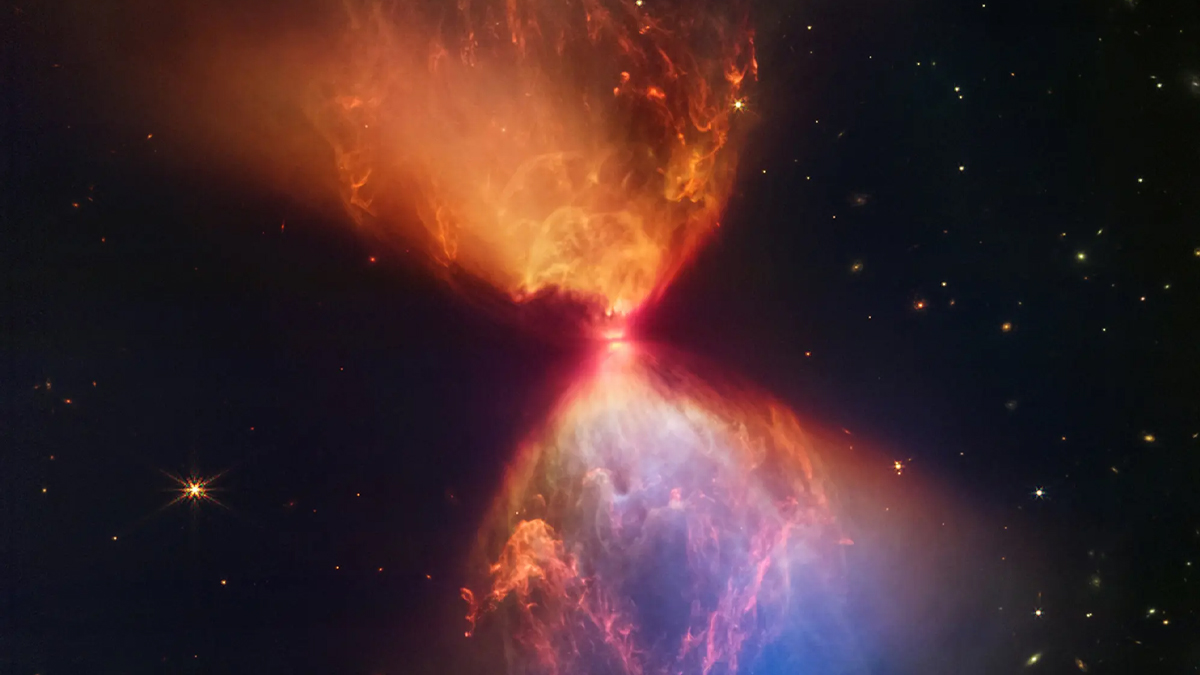
james webb telescope reveals a necklacelike supernova
The James Webb Space Telescope (JWST) has shared a truly stunning picture of a dying star called SN1987A. This star exploded in 1987, and it was the closest and brightest exploding star we’ve ever seen from Earth.
In the picture from the James Webb Space Telescope, the dying star looks like a necklace, and around it, there’s stuff like gas and dust forming a necklace chain. This picture also uncovered two hidden “pearls” that other telescopes, like the European Hubble Space Telescope, couldn’t spot before.
This discovery, which is 170,000 light-years away from us, gives scientists an incredible chance to understand how stars live and die. This supernova in the Southern sky has become the most watched thing in space!
The image shows a series of glowing rings. Each ring represents layers of gas and dust thrown out by the star during its different stages of dying. This incredible show started when the star collapsed and exploded into a supernova.
Read More: Baidu’s AI ChatBot Ernie Bot Steps into the Global AI Arena
One of the exciting things scientists found is something they call a “string of pearls” inside one of these rings. It’s made up of material that got thrown out about 20,000 years before the big explosion. The James Webb Space Telescope’s sharp vision helped us see this necklace and the glowing stuff around the star clearly.
Read More: X, Formerly Twitter, Allows Political Ads Amid Election Season
Dr. Roger Wesson from Cardiff University in the UK said, “We can now see new bright spots appearing outside the ring that we didn’t see before. Also, we see some special gas in the ring that only the James Webb Space Telescope could show because it’s super good at seeing things clearly.”
Another interesting discovery is these crescent-shaped or arc-like patterns inside the celestial necklace, just outside the center part, which looks like a keyhole. Scientists are still figuring out what these crescents mean. Dr. Mikako Matsuura, the leader of the research, thinks they might be lit up by some kind of reverse shockwave, like a shockwave coming back toward the keyhole.
But there’s a catch. Even though the James Webb Space Telescope is amazing, it can’t see what’s left of the dying star buried in all that dust. Scientists believe there should be tiny, dense things left behind, made of neutron particles, and they’re only a few tens of kilometers across.
Ever since the star exploded, all the big telescopes that could see SN1987A have been keeping an eye on it, studying how it changes and behaves.
So, why did this star explode? Well, scientists think it was a hot, relatively young star, much bigger (about 20 to 30 times) than our Sun. Dr. Wesson said, “One of the mysteries of this star is that it exploded when it was a blue supergiant, even though at that time, all the theories said only red supergiant stars could explode. So figuring out why this happened has been a big challenge.”
The James Webb Space Telescope is expected to keep working for a long time, maybe up to 20 years. That means we’ll have a super powerful tool to keep an eye on SN1987A and see how it changes over time. This incredible picture reminds us that there are still so many amazing things to discover in space, thanks to the James Webb Space Telescope.



